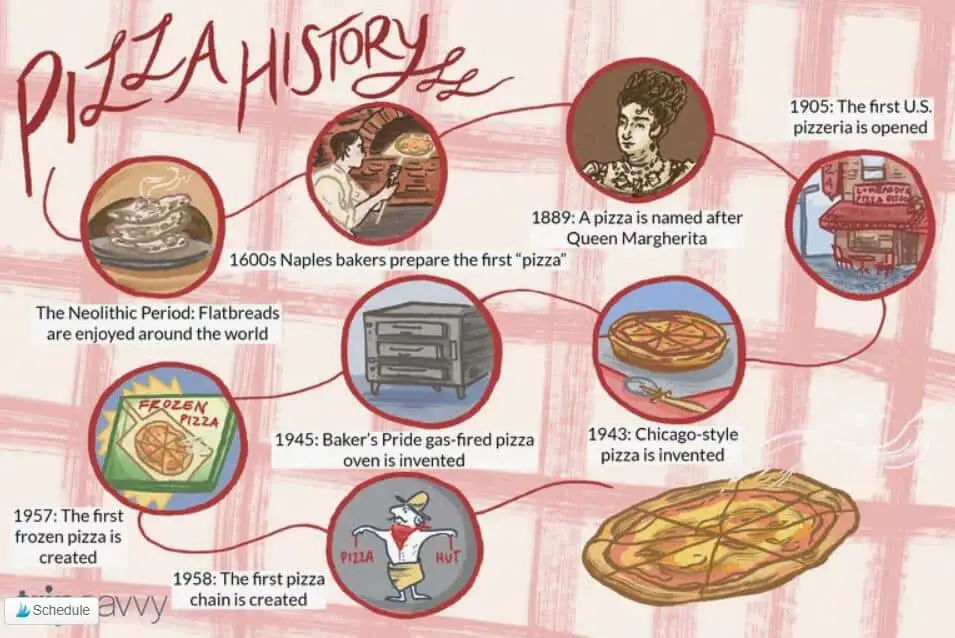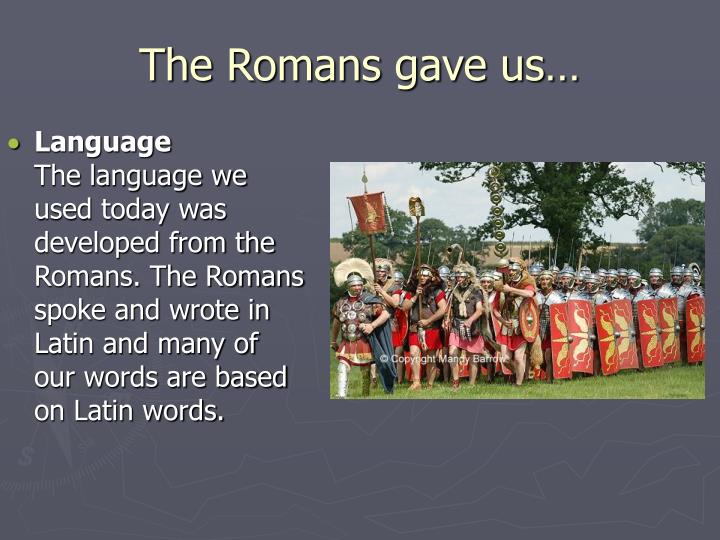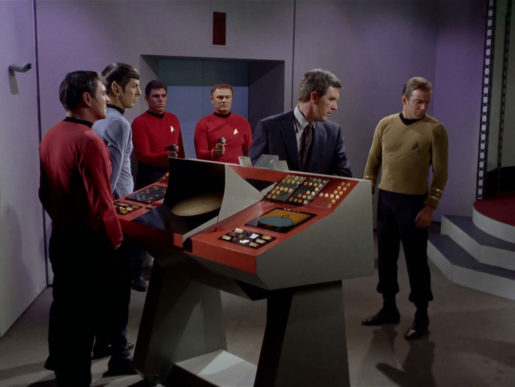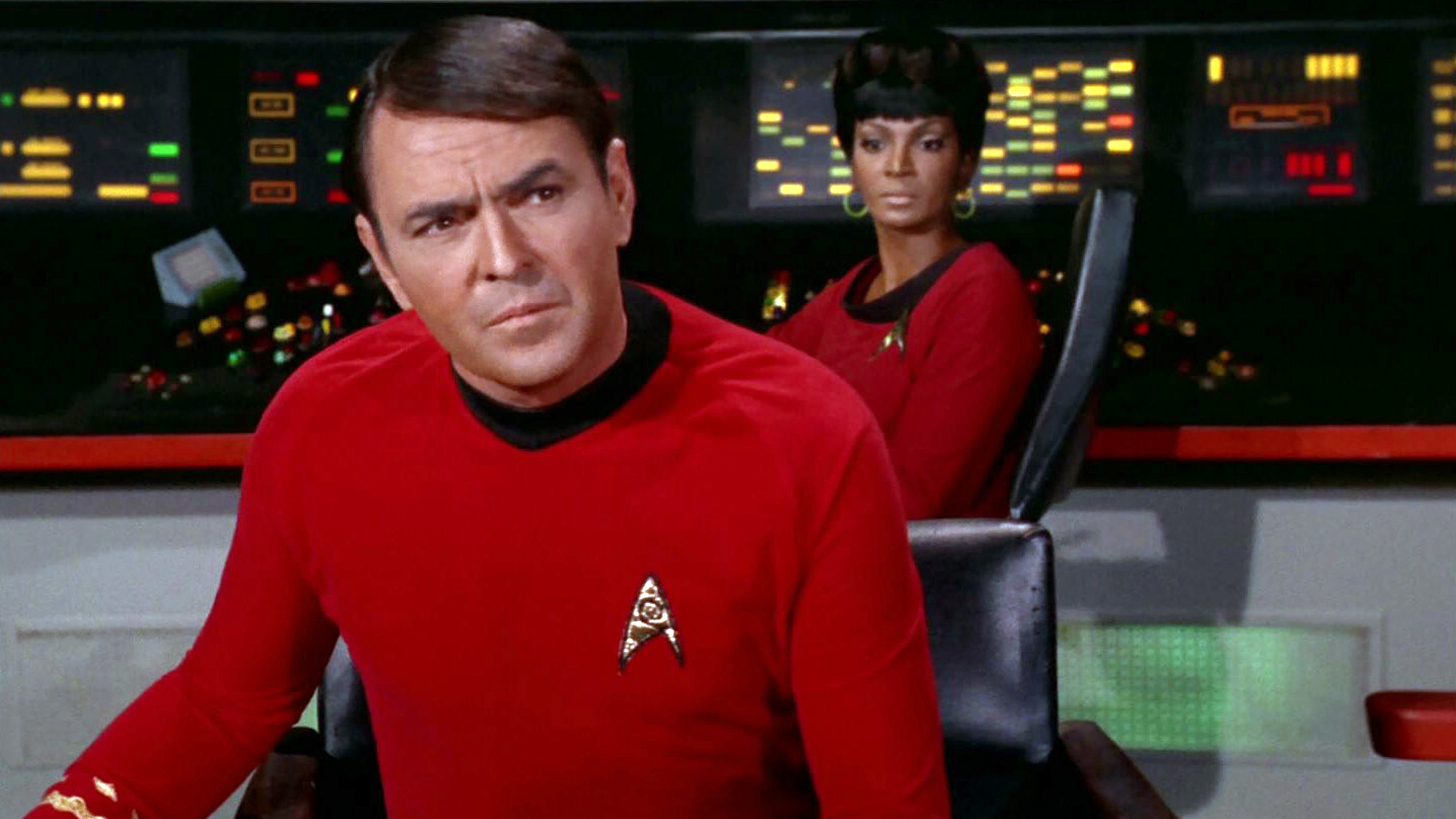
The Origins of Pizza
Pizza, the beloved Italian dish, has become one of the most popular foods in the world. It is a flatbread topped with tomato sauce, cheese, and various toppings. But where did this delicious food come from? The origins of pizza can be traced back to ancient civilizations, including the Greeks, Egyptians, and Romans. However, it was the Italians who perfected the recipe and made it what it is today.
The Legend of Marco Polo

One of the most popular legends surrounding the origins of pizza involves Marco Polo. According to the legend, Marco Polo traveled to China and discovered a dish that resembled pizza. The dish was a flatbread topped with various meats, vegetables, and spices. Polo then brought the recipe back to Italy, where it was perfected and became what we know as pizza today.
The Truth About Chinese Pizza

While the legend of Marco Polo and Chinese pizza is a popular one, it is not entirely true. There is no evidence to suggest that the Chinese invented pizza. However, there is some evidence to suggest that they may have influenced the pizza we know today.
The Influence of Chinese Cuisine

Chinese cuisine has had a significant influence on Italian cuisine over the years. The trade routes between Italy and China allowed for the exchange of goods and ideas, including food. Some of the ingredients used in Chinese cuisine, such as soy sauce and ginger, have been incorporated into Italian dishes, including pizza.
The Evolution of Pizza
While the Chinese may not have invented pizza, they have certainly influenced its evolution. Pizza has gone through many changes over the years, with new toppings and flavors being added all the time. Today, pizza is enjoyed all over the world and is considered one of the most popular foods in existence.
The Bottom Line
So, did the Chinese invent pizza? No, they did not. However, their cuisine has had a significant influence on Italian cuisine and, therefore, pizza. Regardless of its origins, pizza remains one of the most beloved foods in the world and is enjoyed by millions of people every day.
Related video of Did The Chinese Invented Pizza?
The Roman Empire is one of the most famous empires in history. It spanned across Europe, Asia, and Africa, and lasted for over 500 years. The Romans are known for their impressive feats of engineering, their military prowess, and their lasting impact on the world of politics and law. But did the Romans speak English? The answer is no, but let's dive deeper into the topic.
The Latin Language

The language spoken by the ancient Romans was Latin. Latin was the official language of the Roman Empire, and it was used for all official documents, inscriptions, and legal proceedings. Latin was also the language of the Catholic Church for many centuries.
Latin is a dead language, meaning it is no longer spoken as a first language by any community. However, Latin has had a lasting influence on many modern languages, including English. Many English words and phrases have Latin roots, and Latin grammar and syntax have also influenced English.
The English Language

The English language did not exist during the time of the Roman Empire. English is a Germanic language that developed in England during the 5th and 6th centuries CE, after the Roman Empire had already collapsed. English has undergone many changes since its inception, and it has borrowed words and grammar from many different languages, including Latin, French, and Greek.
The Roman Influence on English

Although the Romans did not speak English, their influence can still be seen in the English language. As mentioned earlier, many English words have Latin roots. For example, the English word "person" comes from the Latin word "persona". The English word "exit" comes from the Latin word "exitus".
The Romans also had a lasting impact on the English legal system. Many legal terms used in English today, such as "habeas corpus" and "pro bono", have Latin roots and were used in ancient Rome.
The Importance of Latin Today

Although Latin is no longer spoken as a first language, it is still studied by many people today. Latin is often studied as a way to understand the origins of modern languages, including English. Latin is also still used in many academic fields, including law, medicine, and science.
Furthermore, Latin is still used by the Catholic Church as the official language of the Vatican. Latin is used in many religious ceremonies and documents.
Conclusion
In summary, the Romans did not speak English. The language spoken by the ancient Romans was Latin, which has had a lasting influence on many modern languages, including English. Although Latin is no longer spoken as a first language, it is still studied and used in many academic fields and religious ceremonies.
Related video of Did Romans Speak English?

Introduction
Phil Collins is a renowned English musician, singer, and songwriter. He has been in the music industry for decades and has created a name for himself. However, there have been rumors circulating on the internet that Phil Collins is dead. In this article, we will explore these rumors and find out if they are true.Phil Collins' Career
Phil Collins started his career as a drummer for Genesis, a British rock band. He later became the lead singer of the band and went on to have a successful solo career. He has won numerous awards for his music and has sold millions of records worldwide.
The Rumors
The rumors of Phil Collins' death started circulating on social media platforms in 2020. Many fans were shocked and saddened by the news. Some even started posting tributes to the musician.However, the rumors turned out to be false. Phil Collins is alive and well. He even took to social media to address the rumors and assure fans that he is okay.
Phil Collins' Health Issues
Although Phil Collins is alive, he has had his fair share of health issues. In 2017, he had to cancel some of his tour dates due to a fall that caused him to injure his head. He also suffers from nerve damage in his hands that has affected his ability to play the drums.Despite his health issues, Phil Collins has continued to make music and perform for his fans.
Conclusion
In conclusion, the rumors of Phil Collins' death are false. The musician is alive and well, although he has had some health issues that have affected his ability to perform. Fans can rest assured that Phil Collins is still making music and entertaining audiences around the world.Related video of Did Phil Collins Die?

Introduction
Marie Antoinette is one of the most famous queens in history, known for her lavish lifestyle and her alleged quote "Let them eat cake." However, many people still wonder if she really said those words or if it was simply a rumor.Early Life
Marie Antoinette was born in 1755 in Vienna, Austria, to Empress Maria Theresa and Emperor Francis I. She was the fifteenth child and the last daughter of the royal couple. Marie Antoinette was known for her beauty and charm, and she quickly became a symbol of the Austrian monarchy.
Marriage to Louis XVI
In 1770, Marie Antoinette married Louis-Auguste, the Dauphin of France, who later became King Louis XVI. The marriage was arranged to strengthen the alliance between Austria and France, but it was not a happy one. Louis XVI was shy and awkward, and he had trouble consummating the marriage.Queen of France
When Louis XVI became king in 1774, Marie Antoinette became the queen of France. She was only 19 years old at the time, and she was not prepared for the responsibilities that came with her new role. Marie Antoinette was criticized for her extravagant spending and her disregard for the suffering of the French people.
The Alleged Quote
The quote "Let them eat cake" is often attributed to Marie Antoinette, but there is no evidence that she ever said those words. The phrase first appeared in the book "Confessions" by Jean-Jacques Rousseau, which was written in 1765, when Marie Antoinette was only ten years old.The Meaning of the Quote
The quote "Let them eat cake" is often interpreted as a sign of Marie Antoinette's ignorance and her lack of concern for the poor. However, the phrase "let them eat cake" was not meant to be taken literally. In the 18th century, cake was a luxury item that was only eaten by the rich. The quote was meant to show how out of touch the ruling class was with the common people.
The French Revolution
In 1789, the French Revolution began, and the people of France rose up against the monarchy. Marie Antoinette and Louis XVI were both arrested and imprisoned. In 1793, they were both executed by guillotine.Legacy
Marie Antoinette's legacy is a complex one. She is often remembered for her extravagance and her alleged quote "Let them eat cake." However, she was also a victim of the French Revolution, and she was unfairly blamed for many of the problems in France at the time.
Conclusion
In conclusion, there is no evidence that Marie Antoinette ever said "Let them eat cake." The quote was meant to show how out of touch the ruling class was with the common people, and it was not meant to be taken literally. Marie Antoinette's legacy is a complex one, and she is remembered for both her extravagance and her victimization during the French Revolution.Related video of Did Marie Antoinette Really Say Let Them Eat Cake?
Introduction
Adolf Hitler is known as one of the most notorious and evil leaders in world history. His actions during World War II resulted in the deaths of millions of innocent people. But did Hitler have a brother? This question has intrigued many people over the years. In this article, we will explore the life of Hitler's brother and what happened to him.Early Life
Hitler was born in Austria in 1889. He had several siblings, including a younger brother named Edmund. Edmund was born in 1894 and was the only other surviving child of Hitler's parents, Alois and Klara. Edmund was a bright and intelligent child, but he was overshadowed by his older brother.
Relationship with Hitler
Hitler and Edmund had a complicated relationship. Hitler was known to be domineering and controlling, even towards his family members. Despite this, Edmund idolized his older brother and looked up to him. Hitler, on the other hand, saw his brother as weak and inferior.Death
Tragically, Edmund died in 1900 at the age of six. The cause of death is unknown, but it is believed that he died from measles. Hitler was devastated by his brother's death and it is said to have had a profound impact on him. Some historians believe that this event may have contributed to Hitler's later actions and beliefs.Hitler's Reaction
Hitler's reaction to his brother's death was unusual. He became withdrawn and introverted, and his grades at school began to suffer. Some historians have suggested that Hitler may have harbored feelings of guilt over his brother's death, or that he saw it as a sign of his own mortality.Legacy
Despite his short life, Edmund Hitler has had a lasting impact on history. His death may have contributed to his older brother's descent into madness and his eventual rise to power. Some historians have even suggested that if Edmund had lived, he may have been able to prevent his brother from pursuing his destructive agenda.Conclusion
In conclusion, yes, Hitler did have a brother named Edmund. Edmund's life was tragically cut short, but his legacy has had a lasting impact on history. While we may never know exactly what happened to Edmund or how his life may have turned out, his story serves as a reminder of the importance of family and the devastating effects of war and violence.Related video of Did Hitler Have A Brother?
Introduction
Fred Rogers, also known as Mister Rogers, was a beloved children's television host who touched the hearts of millions. His gentle demeanor, kindness, and love for children have made him an iconic figure in American culture. However, there have been rumors circulating online that Fred Rogers had tattoos. This article will explore the truth behind these rumors and shed some light on whether or not Mister Rogers had tattoos.The Rumors
The rumors that Fred Rogers had tattoos began to circulate online in the early 2000s. Some people claimed that they had seen pictures of Mister Rogers with tattoos, while others said that they had heard rumors from people who knew him personally. The rumors gained traction on social media and message boards, and many people began to wonder if there was any truth to them.The Truth
Despite the rumors, there is no evidence to suggest that Fred Rogers had tattoos. In fact, those who knew him well have stated that he was vehemently opposed to tattoos and would never have gotten one himself. According to Joanne Rogers, Fred's wife, he was "very much against" tattoos and believed that they were "defacing the body."The Source of the Rumors
So where did the rumors that Fred Rogers had tattoos come from? It's difficult to say for sure, but it's likely that they were simply a result of people spreading false information online. In the early days of the internet, it was much easier for rumors and misinformation to spread unchecked, and the rumors about Mister Rogers' tattoos may have simply been a case of someone making something up and it catching on.The Legacy of Fred Rogers
Despite the rumors about his tattoos, Fred Rogers remains an incredibly important figure in American culture. His dedication to educating and entertaining children has left a lasting impact on generations of viewers, and his message of kindness and acceptance is more important now than ever. Mister Rogers' Neighborhood may have gone off the air in 2001, but his legacy lives on through the countless lives he touched during his time on television.Conclusion
In the end, the rumors that Fred Rogers had tattoos are simply that: rumors. There is no evidence to suggest that Mister Rogers ever got a tattoo, and those who knew him well say that he would never have done so. While the rumors may be intriguing, they don't change the fact that Fred Rogers was an incredible person who left a lasting impact on millions of people. His message of kindness, acceptance, and love will continue to inspire and uplift for generations to come.Related video of Did Fred Rogers Have Tattoos?

The Origin of "Beam Me Up Scotty"
"Beam me up, Scotty" is a famous catchphrase from the science fiction television series Star Trek. It was often used by the show's main character, Captain James T. Kirk, to instruct the ship's chief engineer, Montgomery "Scotty" Scott, to transport him back to the starship Enterprise from a planet's surface. Despite its popularity, Kirk never actually said the exact phrase "beam me up, Scotty" in the original series.

The Closest Kirk Came to Saying "Beam Me Up Scotty"
The closest Kirk ever came to saying the famous phrase was in the 1994 novelization of the Star Trek: The Motion Picture, written by Gene Roddenberry. In the book, Kirk says, "Beam me up, Mr. Scott." However, this was not part of the original script or the final cut of the film.

The Evolution of "Beam Me Up Scotty"
Despite the lack of evidence of Kirk ever saying the phrase, "beam me up, Scotty" became engrained in popular culture and has been referenced in various forms of media. The closest the phrase came to being said on the original series was in the episode "The Savage Curtain" when Kirk said, "Scotty, beam us up." However, this was still not the exact phrase.

In later Star Trek movies and television shows, the phrase "beam me up, Scotty" was used, but it was not spoken by Kirk. The phrase was first used in the 1979 film Star Trek: The Motion Picture by the character Admiral James T. Kirk, a different character than Captain Kirk. The catchphrase was also used in the animated series, Star Trek: The Animated Series, which aired from 1973 to 1974.

The Cultural Impact of "Beam Me Up Scotty"
Despite the lack of evidence of Kirk ever saying the phrase, "beam me up, Scotty" has become a part of popular culture. The phrase has been used in various forms of media, including music, movies, and television shows. The phrase has also been referenced in books, magazines, and other forms of literature. In 2008, the catchphrase was even added to the Oxford Dictionary of Quotations.

The Legacy of Captain Kirk and "Beam Me Up Scotty"
Despite never actually saying the exact phrase, "beam me up, Scotty," Captain Kirk and his adventures on the starship Enterprise have left a lasting impact on popular culture. The character, played by William Shatner, has become an icon and has been referenced in various forms of media. The phrase "beam me up, Scotty" may not have been said by Kirk, but it has become a part of the character's legacy and a symbol of the enduring popularity of Star Trek.

Conclusion
Despite the lack of evidence of Kirk ever saying the exact phrase "beam me up, Scotty," the catchphrase has become a part of popular culture and a symbol of the enduring popularity of Star Trek. While the phrase may not have originated from the original series, it has become associated with Captain Kirk and his adventures on the starship Enterprise. The legacy of Star Trek and its characters, including Captain Kirk, continues to live on through various forms of media and continues to inspire generations of fans.
Related video of Did Captain Kirk Ever Say Beam Me Up Scotty?

Dick Van Dyke, born on December 13, 1925, is an American actor, comedian, writer, and singer. He is best known for his roles in the films 'Mary Poppins', 'Chitty Chitty Bang Bang', and 'Night at the Museum' trilogy. He started his career in the late 1940s as a radio DJ and comedian. He then moved on to television and film, where he became a household name. Van Dyke has won numerous awards for his contributions to the entertainment industry, including a Tony Award, a Grammy Award, and multiple Emmy Awards.
Early Life

Dick Van Dyke was born in West Plains, Missouri, to Hazel Victoria and Loren Wayne Van Dyke. He grew up in Danville, Illinois, where he attended high school. After graduation, he joined the United States Army Air Corps during World War II. After the war, he attended Danville Junior College and then transferred to Southern Illinois University in Carbondale, where he studied radio and television.
Career Beginnings

Van Dyke started his career in the late 1940s as a radio DJ in Danville, Illinois. He then moved to television, where he hosted a variety show called 'The Dick Van Dyke Show'. He also appeared in several Broadway productions, including 'Bye Bye Birdie' and 'The Girls Against the Boys'.
Breakthrough Role
Van Dyke's breakthrough role came in 1964 when he starred as Bert, the chimney sweep, in the Disney film 'Mary Poppins'. He also provided the voice for the role of the elderly banker, Mr. Dawes Sr. The film was a huge success and earned Van Dyke a nomination for a Golden Globe Award for Best Actor in a Musical or Comedy.
Later Career

Van Dyke continued to work in film and television throughout the 1970s, 1980s, and 1990s. He starred in the film 'Chitty Chitty Bang Bang' and the television series 'The Dick Van Dyke Show' and 'Diagnosis: Murder'. He also made appearances in several films, including 'Night at the Museum' and its sequels.
Awards and Recognition

Van Dyke has won numerous awards for his contributions to the entertainment industry. He won a Tony Award for his performance in the Broadway musical 'Bye Bye Birdie'. He also won a Grammy Award for Best Children's Album for his work on 'Mary Poppins'. He has won multiple Emmy Awards for his work on 'The Dick Van Dyke Show' and 'Van Dyke and Company'.
Personal Life
Van Dyke has been married twice. He was first married to Margie Willett in 1948, and they had four children together. They divorced in 1984. He then married makeup artist Arlene Silver in 2012, when he was 86 years old and she was 40.
Philanthropy

Van Dyke is also known for his philanthropic work. He is a supporter of numerous charities and organizations, including the American Heart Association and the Alzheimer's Association. He also established the Dick Van Dyke Foundation to support the arts and education.
Legacy
Dick Van Dyke has had a long and successful career in the entertainment industry. He is beloved by fans around the world for his talent and charm. His contributions to film, television, and theater have earned him numerous awards and accolades. He continues to work in the industry and inspire new generations of performers.
Conclusion
Dick Van Dyke is an American icon and a beloved figure in the entertainment industry. His talent and charm have made him one of the most recognizable and respected performers of his generation. He has won numerous awards for his contributions to film, television, and theater, and he continues to inspire new generations of performers. His philanthropic work and dedication to the arts have made him a true American treasure.
Related video of Dick Van Dyke Bio

As you may have noticed, there has been a shortage of Diamond Kosher Salt in stores across the country. This has caused frustration for many home cooks and chefs who rely on this brand for its quality and flavor. If you're wondering why this is happening and what you can do about it, read on.
What is Diamond Kosher Salt?

Diamond Kosher Salt is a popular brand of coarse-grained salt that is often used in cooking and baking. It is called "kosher" because it is used in the koshering process of meat, where it is sprinkled on the surface of the meat to draw out blood. However, it is also used in many other recipes because of its texture and flavor.
Why is there a shortage of Diamond Kosher Salt?

The shortage of Diamond Kosher Salt is due to a combination of factors. First, the COVID-19 pandemic has disrupted supply chains and caused delays in shipping and manufacturing. Second, there has been a surge in demand for kosher salt as more people are cooking at home during the pandemic. Finally, Diamond Crystal, the company that produces Diamond Kosher Salt, has had to reduce production due to safety measures related to the pandemic.
What can you use instead of Diamond Kosher Salt?

If you can't find Diamond Kosher Salt in stores, there are several alternatives you can use. Morton Kosher Salt is a popular brand that is similar in texture and flavor. Sea salt or Himalayan pink salt can also be used, but keep in mind that they have a different flavor profile and may not work as well in some recipes.
What are the implications for restaurants?

The shortage of Diamond Kosher Salt has had a significant impact on restaurants, many of which rely on this brand for its consistency and quality. Some restaurants have had to change their menus or even close temporarily because they cannot find a suitable replacement for Diamond Kosher Salt. Others have had to pay higher prices for alternative brands, which has cut into their profits.
What is Diamond Crystal doing to address the shortage?

Diamond Crystal has acknowledged the shortage and is working to address it. The company has stated that they are ramping up production and working with retailers to ensure that stores are stocked with Diamond Kosher Salt as soon as possible. However, it may take some time for the supply to catch up with the demand.
What can you do to help?

If you are a home cook or chef who relies on Diamond Kosher Salt, there are a few things you can do to help. First, be patient and understand that this is a difficult time for everyone. Second, consider trying alternative brands of kosher salt or other types of salt that may work just as well in your recipes. Finally, support your local restaurants by dining in or ordering takeout, as they are struggling to adapt to the shortage and need our support.
Conclusion
The Diamond Kosher Salt shortage has been a frustrating experience for many home cooks and chefs, but it is important to remember that we are all in this together. By being patient and flexible, we can adapt to the shortage and continue to enjoy delicious meals. If you have any questions or concerns about the shortage, reach out to Diamond Crystal or your local retailers for more information.
Related video of Diamond Kosher Salt Shortage: What You Need to Know
The Tacoma Narrows Bridge is a suspension bridge that spans the Tacoma Narrows strait in Washington, United States. It was designed by Leon Moisseiff and opened on July 1, 1940. The bridge had a main span of 2,800 feet (853 meters) and was the third-longest suspension bridge at that time.
Design Process

The design process for the Tacoma Narrows Bridge began in 1937. The Washington State Toll Bridge Authority appointed Leon Moisseiff as the chief engineer. Moisseiff had previously designed the Manhattan Bridge in New York City.
Moisseiff's design for the Tacoma Narrows Bridge was a suspension bridge with a main span of 2,800 feet. The bridge was to be supported by two towers, each 425 feet high, and the roadway was to be 39 feet wide.
Construction

Construction of the Tacoma Narrows Bridge began in November 1938. The bridge was built using the cantilever method, which involved building the bridge out from each tower towards the middle. The roadway was made of steel trusses and was suspended from the main cables by vertical suspenders.
The construction of the bridge was completed in July 1940, at a cost of $6.4 million. The bridge was opened to traffic on July 1, 1940.
Wind-Induced Oscillations

The Tacoma Narrows Bridge was known for its wind-induced oscillations, also known as "Galloping Gertie". On November 7, 1940, wind speeds of 42 miles per hour caused the bridge to oscillate violently. The oscillations became so severe that the bridge collapsed.
The cause of the collapse was attributed to aeroelastic flutter, which occurs when wind forces cause the bridge to vibrate at its natural frequency. The vibration amplitude increased until the bridge could no longer support its own weight and collapsed.
Lessons Learned

The collapse of the Tacoma Narrows Bridge led to significant changes in bridge design and engineering. The incident highlighted the importance of aerodynamic stability in bridge design and led to the development of new techniques for designing and testing suspension bridges.
The collapse of the Tacoma Narrows Bridge also led to the development of wind tunnel testing, which is now a standard practice in bridge design. The lessons learned from the collapse of the Tacoma Narrows Bridge have helped to prevent similar incidents from occurring in the future.
Conclusion
The design of the Tacoma Narrows Bridge was an ambitious project that ultimately failed due to wind-induced oscillations. However, the lessons learned from the collapse of the bridge have contributed to significant advancements in bridge design and engineering. The Tacoma Narrows Bridge remains an important case study in the history of engineering and serves as a reminder of the importance of safety and stability in bridge design.